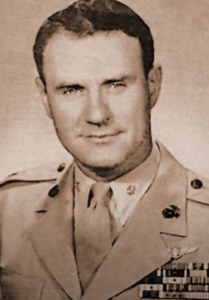“On July 26, 1959, Marine LtCol William Rankin “was flying in an F-8 Crusader from Naval Air Station South Weymouth in Massachusetts to Marine Corps Air Station Beaufort in South Carolina. At around 6:00 PM, minutes before Rankin was about to make his descent towards Beaufort, the pilot heard grinding sounds coming from his aircraft’s engine. The engine stopped, and a fire warning light flashed. Rankin pulled the lever to deploy auxiliary power, and it broke off in his hand.”
 “Rankin was plummeting into the tumultuous belly of a powerful storm cloud. For approximately five minutes, Rankin had little to no visibility while in the dark storm cloud that blocked out the sun’s light.
“Rankin was plummeting into the tumultuous belly of a powerful storm cloud. For approximately five minutes, Rankin had little to no visibility while in the dark storm cloud that blocked out the sun’s light.
Rankin’s parachute was supposed to deploy at an altitude of 10,000 feet, but the intense storm triggered the barometric parachute switch prematurely. The worst part was that the parachute opened up while he was literally inside of a turbulent thunderstorm. The Lieutenant Colonel was pelted by rain, hail, and lightning bolts were flying all around him as he glided through the cumulonimbus thunderstorm cloud. Strong updrafts in the storm cell decreased his terminal velocity at the worst possible time…The winds threw Rankin over his parachute and spun him in circles.
The rain was so intense that he thought that he might drown and was forced to hold his breath… [He] nearly died from drowning at 30,000 feet in the sky.”
LtCol William H. Rankin, then commanding officer of the squadron earned a place in the Guinness Book of Records by surviving the longest recorded parachute descent in history. He had ejected into a violent thunderstorm over North Carolina which caused his descent to last 40 minutes rather than the expected 11 minutes.
For a video go to A Man Who Nearly Drowned at the Height of 30,000 Ft – YouTube
